In the vast tapestry of Norse mythology, few figures stand as prominently as the Norse Bear Warriors. These legendary figures, often intertwined with the tales of Viking Berserkers, have captured the imagination of many, from pagans to enthusiasts of Norse culture. The bear, revered in many cultures for its strength and majesty, held a special place in the hearts of the old Norse people. It wasn’t just an animal; it was a symbol, a spirit, and in some cases, an ancestor.
The term “berserker”, often associated with Norse warriors who fought with an almost uncontrollable, trance-like fury, is believed to derive from the Old Norse words ‘ber’, meaning “bear”, and ‘serkr’, meaning “shirt” or “coat”. This suggests that these warriors might have donned bear skins during battle, channeling the spirit of the bear to enhance their prowess. The berserker’s connection to the bear spirit is a testament to the animal’s central role in Norse spiritual and daily life.
But why the bear? In the natural world, the brown bear, or ursus arctos, is a symbol of raw power and authority. In Norse mythology, this creature was more than just a wild animal; it was a bridge between the natural world and the spirit world. The bear ancestor, often associated with other Norse gods, played a pivotal role in numerous sagas and tales that have been passed down through generations.
For the Nordic people, the bear was not just a creature to be revered; it was a part of their identity. From the bear paw symbols found in ancient Norse settlements to tales of Viking Berserkers channeling the bear’s might in battle, the connection between the Norse and the bear is undeniable. This bond, deeply rooted in spirituality and respect for the natural world, offers a unique insight into the world of the Vikings and their beliefs. As we delve deeper into the world of Norse Bear Warriors and their significance, we’ll uncover tales of bravery, spirituality, and the deep-rooted connection between man and beast.
Whether you’re a pagan seeking spiritual truths, a fan of the Vikings TV show, or simply curious about Norse mythology, the journey into the world of Norse Bear Warriors promises to be a captivating one. As we embark on this exploration, let’s keep an open heart and mind, ready to embrace the wisdom and tales of a bygone era.
Historical Context of Norse Bear Warriors
The Bear’s Elevated Status in Norse Spirituality
The old Norse people, with their rich tapestry of myths, legends, and sagas, held a profound reverence for the natural world. Among the myriad creatures that populated their tales, the bear held a place of honor. Its spirit was not just a symbol of strength and courage but also a guiding force in their spiritual journey and daily life.
In the vast landscapes of the Nordic regions, where dense forests met rugged mountains, the bear was both a revered and feared presence. The brown bear, with its imposing stature and fierce demeanor, was seen as a bridge between the realms of man and the gods. This wasn’t merely a result of its physical attributes; the bear’s behavior, from its hibernation patterns to its protective nature towards its cubs, resonated deeply with the Norse people’s understanding of life, death, and rebirth.
The Bear in Pagan Cults and Norse Myths
The bear’s central role in Norse spirituality can be traced back to ancient pagan cults that saw the animal as a manifestation of the divine. The bear ancestor, often intertwined with tales of other Norse gods, was a testament to the creature’s elevated status. In numerous sagas, the bear was portrayed as Odin’s animal, a companion to the chief god in his many adventures. Moreover, the bear was also associated with the Norse goddess of love and fertility, further emphasizing its importance in the cycle of life.
Symbols of Strength: The Bear Paw and Beyond
Beyond the realms of gods and myths, the bear spirit played a pivotal role in the daily life of the Norse people. Symbols of strength, such as the bear paw, were common motifs in Norse settlements, carved into stones, etched onto weapons, and even tattooed on warriors. These symbols served as reminders of the bear’s might and the lessons it imparted. They believed that by channeling the bear’s spirit, they could tap into its inner wisdom, guiding them in times of conflict and peace.
Lessons from the Bear: Respecting the Natural World
For the Norse, the bear was more than just an animal; it was a teacher. Its interactions with the natural world offered insights into survival, adaptation, and the delicate balance of ecosystems. By observing the bear, the Norse learned the importance of respecting the natural world, understanding its rhythms, and recognizing the interconnectedness of all living beings.
As we delve deeper into the world of Norse Bear Warriors, it becomes evident that their reverence for the bear was not just a product of awe-inspired tales but a reflection of a deeper, more profound connection to the world around them. A connection that, to this day, resonates with pagans and seekers of spiritual truths.
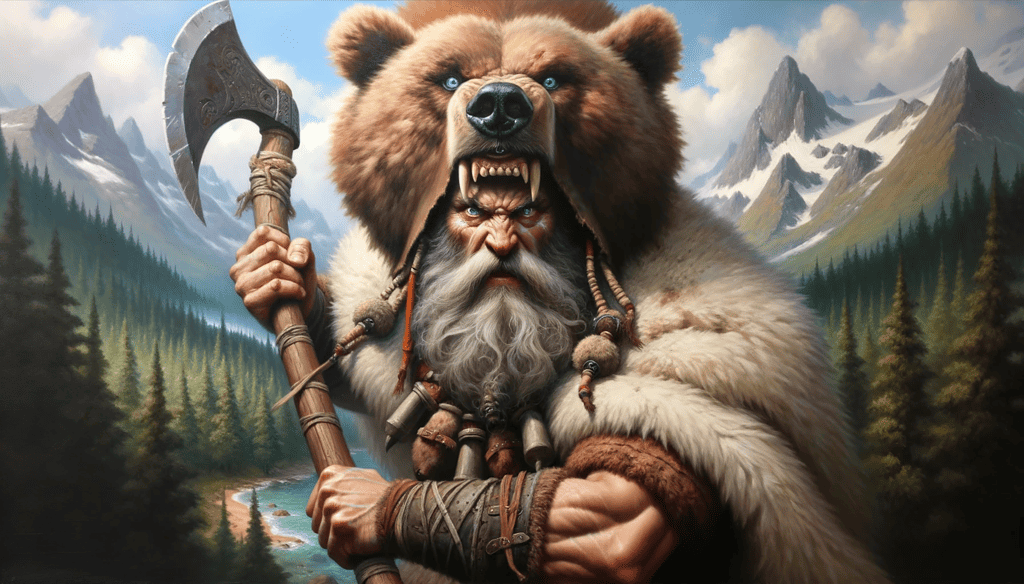
The Berserker: More than Just Warriors
The Origin of the Viking Berserker
The term “berserker” has become synonymous with warriors displaying wild and uncontrollable behavior in battle. But where did this term originate, and what does it truly signify in the context of Norse culture? The etymology of the word “berserker” is deeply rooted in the world of Norse mythology and spirituality. Derived from the Old Norse words ‘ber’, meaning “bear”, and ‘serkr’, meaning “shirt” or “coat”, the term paints a vivid picture of warriors donning bear skins. This was not merely a fashion statement or a tactic to instill fear in the hearts of enemies. By wearing bear skins, these warriors believed they were channeling the spirit and strength of the bear ancestor, drawing upon its raw power and ferocity.
The connection between the berserker and the bear goes beyond mere attire. In Norse settlements, tales of berserkers were often intertwined with stories of the bear spirit, emphasizing the strong connection between man, beast, and the divine. The bear, revered for its strength and wisdom, was seen as a bridge between the natural world and the spirit world. By channeling the bear’s spirit, berserkers believed they could tap into a reservoir of inner wisdom and strength, making them formidable foes on the battlefield.
Berserkers in Battle: Superhuman Strength and Frenzy
The tales of berserkers in battle are the stuff of legends. These warriors, fueled by the spirit of the bear, were said to display superhuman strength and a trance-like fury that made them almost invincible. But this wasn’t mere exaggeration or the stuff of tall tales. Historical accounts and sagas often spoke of berserkers going into a battle-induced trance, a state where pain, fear, and fatigue seemed non-existent. This frenzied state, often referred to as “berserker rage”, was both a blessing and a curse. While it made them unparalleled warriors, it also often led to a loss of self-control, making them as much a danger to friend as to foe.
But what triggered this berserker rage? While many theories exist, from ritualistic consumption of certain herbs to spiritual rituals, the most widely accepted belief is their deep connection to the bear spirit. By channeling the bear’s raw power and primal instincts, berserkers were able to transcend their human limitations, becoming forces of nature on the battlefield. This deep-rooted spiritual connection made them not just warriors, but also revered figures in Norse culture, often seen as intermediaries between the mortal realm and the spirit world.
As we explore the world of Norse Bear Warriors and berserkers, it’s essential to understand that their legacy is not just about battles and conquests. It’s a testament to the Norse people’s deep spiritual connection to the world around them, a bond that continues to inspire and captivate pagans and seekers of spiritual truths to this day.
The Bear in Norse Mythology
The Great Bear and the Norse Gods
In the intricate web of Norse mythology, the bear holds a place of reverence and awe, often intertwined with tales of mighty Norse gods like Odin and Thor. The great bear, a symbol of raw power and authority, was not just a creature of the wild but a divine entity that walked alongside the gods in numerous sagas.
Odin, the chief god in the Norse pantheon, often embarked on quests and adventures accompanied by various creatures. Among them, the bear stood as a symbol of strength and wisdom. It’s said that the bear’s keen senses and unparalleled might were attributes that Odin deeply respected, drawing parallels between the bear’s spirit and his own quest for knowledge and power.
Thor, the god of thunder and protector of mankind, also shared a profound connection with the bear. However, such connections might be borrowed or influenced by the neighboring Finns, whose sky and weather god was called Ukko. In various tales, Thor’s battles against giants and monsters were likened to the ferocity of a bear defending its territory. The bear’s unwavering courage and strength mirrored Thor’s own attributes, making it a fitting symbol for the god of thunder.
The sagas, passed down through generations, are replete with tales of gods and bears, their fates intertwined in a dance of power, respect, and mutual admiration. These stories serve as a testament to the bear’s elevated status in Norse mythology, not just as a creature of the wild but as a divine entity that walked alongside the gods.
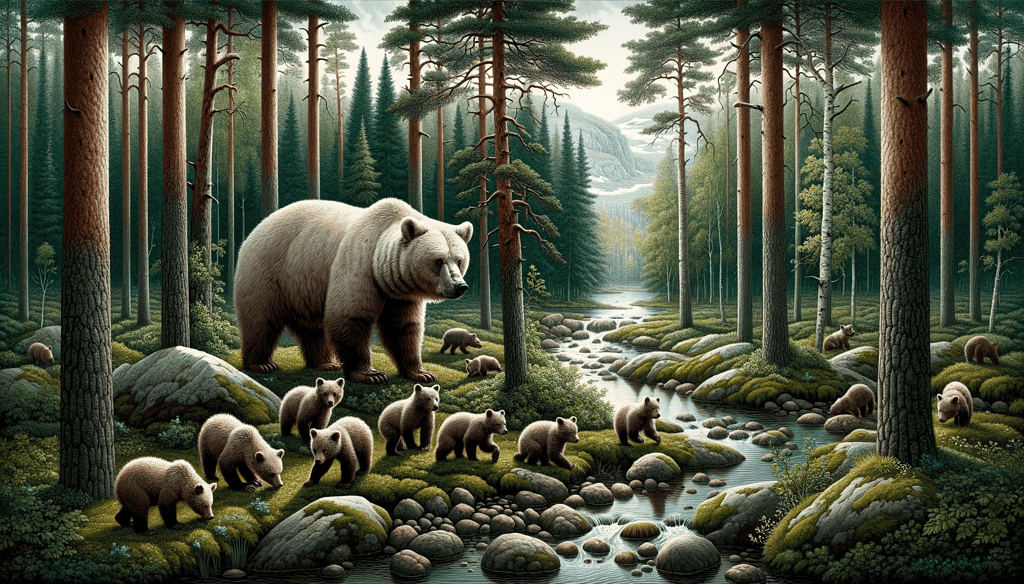
Female Bear and Mother Bear: Symbols of Strength and Protection
In the realm of symbols, the female bear stands as a poignant emblem for modern pagan women, wives, and mothers. Its essence captures the myriad roles these women play, intertwining strength, protection, and nurturing in a harmonious dance.
The female bear, with her fierce protectiveness over her cubs, mirrors the unwavering dedication of today’s mothers. Just as the bear guards her young against the perils of the wild, modern mothers navigate the complexities of the world to shield their children, ensuring their safety and well-being. This symbol serves as a testament to the resilience, courage, and boundless love that defines motherhood.
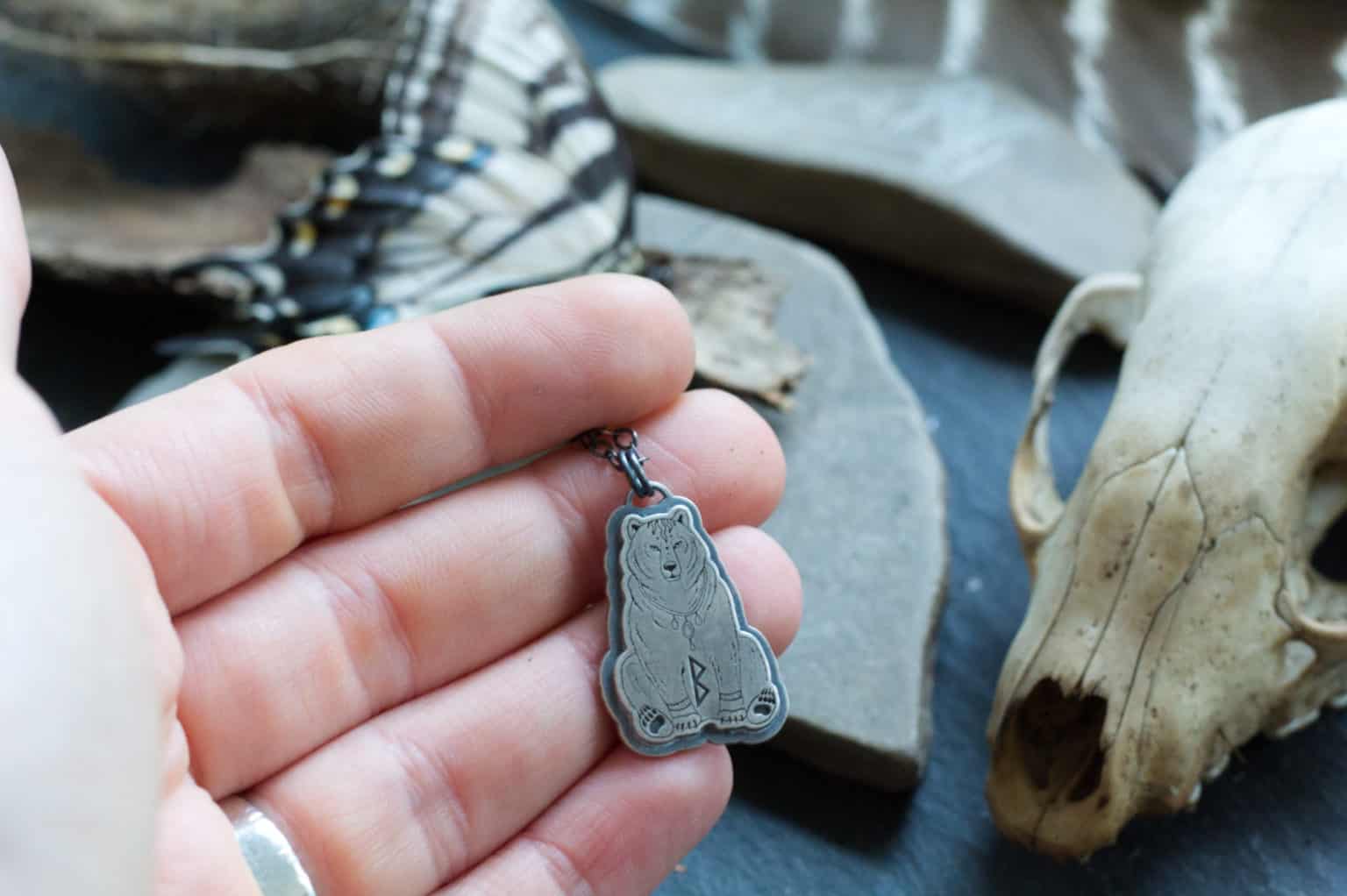
For wives and partners, the mother bear’s nurturing nature resonates deeply. Her commitment to the well-being of her cubs reflects the dedication and care that women bring into their relationships, fostering bonds built on trust, understanding, and mutual respect. The female bear’s role in guiding her young, teaching them the ways of the wild, parallels the journey of women as they guide their families, imparting wisdom and values.
For the broader community of pagan women, the female bear symbolizes a deep-rooted connection to the natural world. It serves as a reminder of the innate strength and intuition that women possess, urging them to trust their instincts and embrace their unique spiritual journey. In a world that often feels chaotic, the symbol of the female bear offers solace and empowerment, reminding women of their inherent power and the sacred bond they share with nature.
Bear Spirituality and the Norse Connection
Spirit Animals and the Spirit World
In the rich spiritual landscape of Norse culture, the concept of spirit animals played a pivotal role, bridging the gap between the mortal realm and the ethereal spirit world. These spirit animals, often seen as guides or protectors, held deep significance, guiding individuals through life’s challenges and offering insights into the mysteries of the universe.
Among the myriad spirit animals revered by the Norse, the bear stood out as a beacon of strength, wisdom, and spiritual connection. Its presence in the natural world, from the dense forests to the rugged mountains, made it a constant reminder of the delicate balance between man, nature, and the divine. The bear’s strong connection to both the spirit world and the natural world made it a revered figure, often seen as a bridge between the two realms.
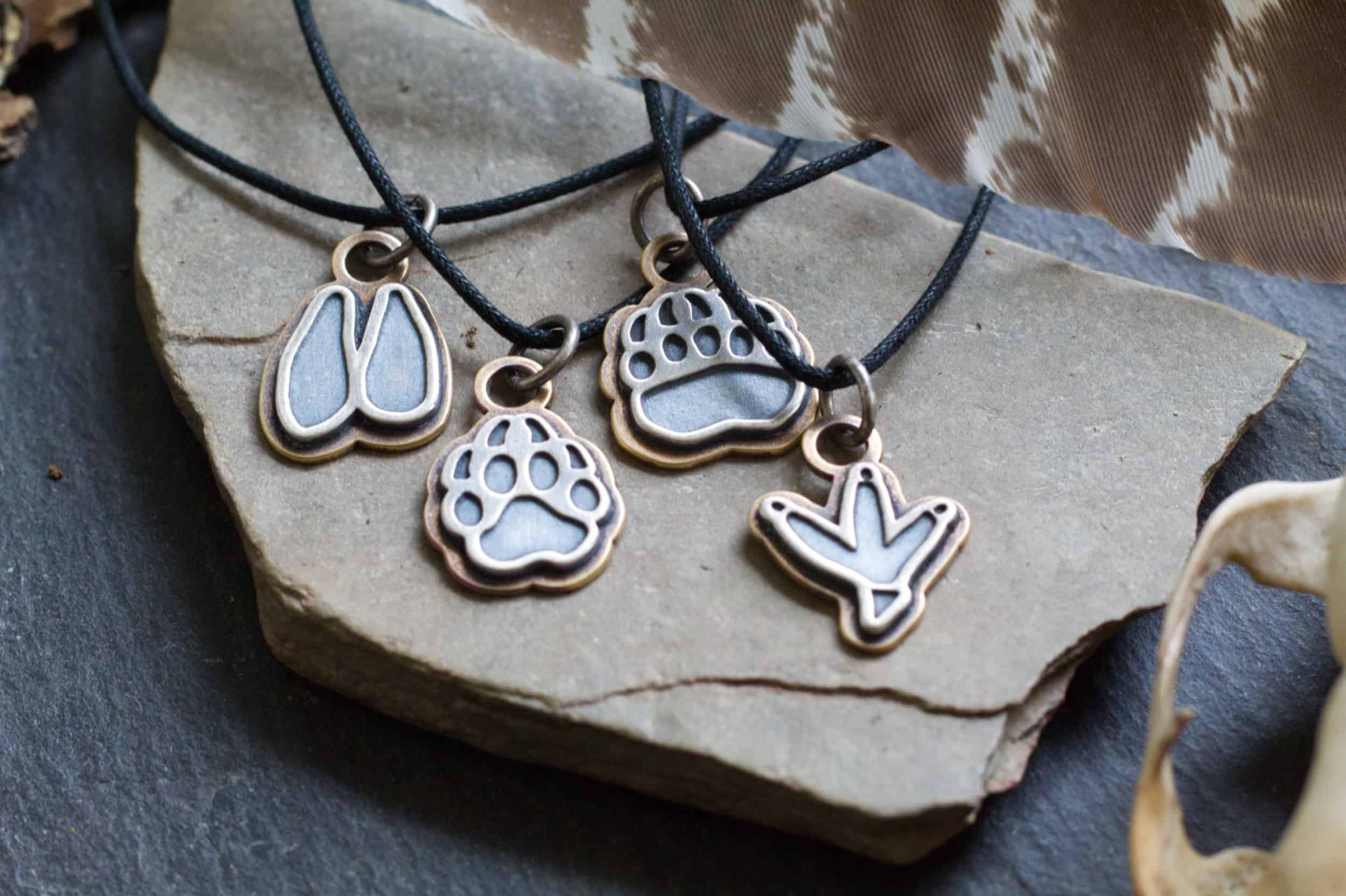
For the Norse, the bear wasn’t just a wild creature; it was a spiritual guide, offering wisdom and insights that went beyond the confines of the physical world. Its hibernation patterns, symbolizing death and rebirth, resonated with the Norse beliefs about the cyclical nature of life and the eternal dance of creation and destruction. By connecting with the bear spirit, individuals could tap into a reservoir of inner wisdom, drawing upon the bear’s primal instincts and deep-rooted connection to the cosmos.
The Bear Paw and Other Symbols
Symbols have always been powerful tools of communication, transcending language barriers and resonating with the very core of human understanding. In Norse settlements, symbols related to the bear, such as the bear paw and bear head, were more than mere artistic expressions; they were embodiments of the community’s beliefs, values, and spiritual connections.
The bear paw, often found carved into stones or etched onto weapons, was a symbol of strength, protection, and guidance. It served as a reminder of the bear’s might and the lessons it imparted, guiding warriors in battle and offering protection to the community. The bear head, on the other hand, was a symbol of leadership and authority, often associated with chieftains or revered warriors.
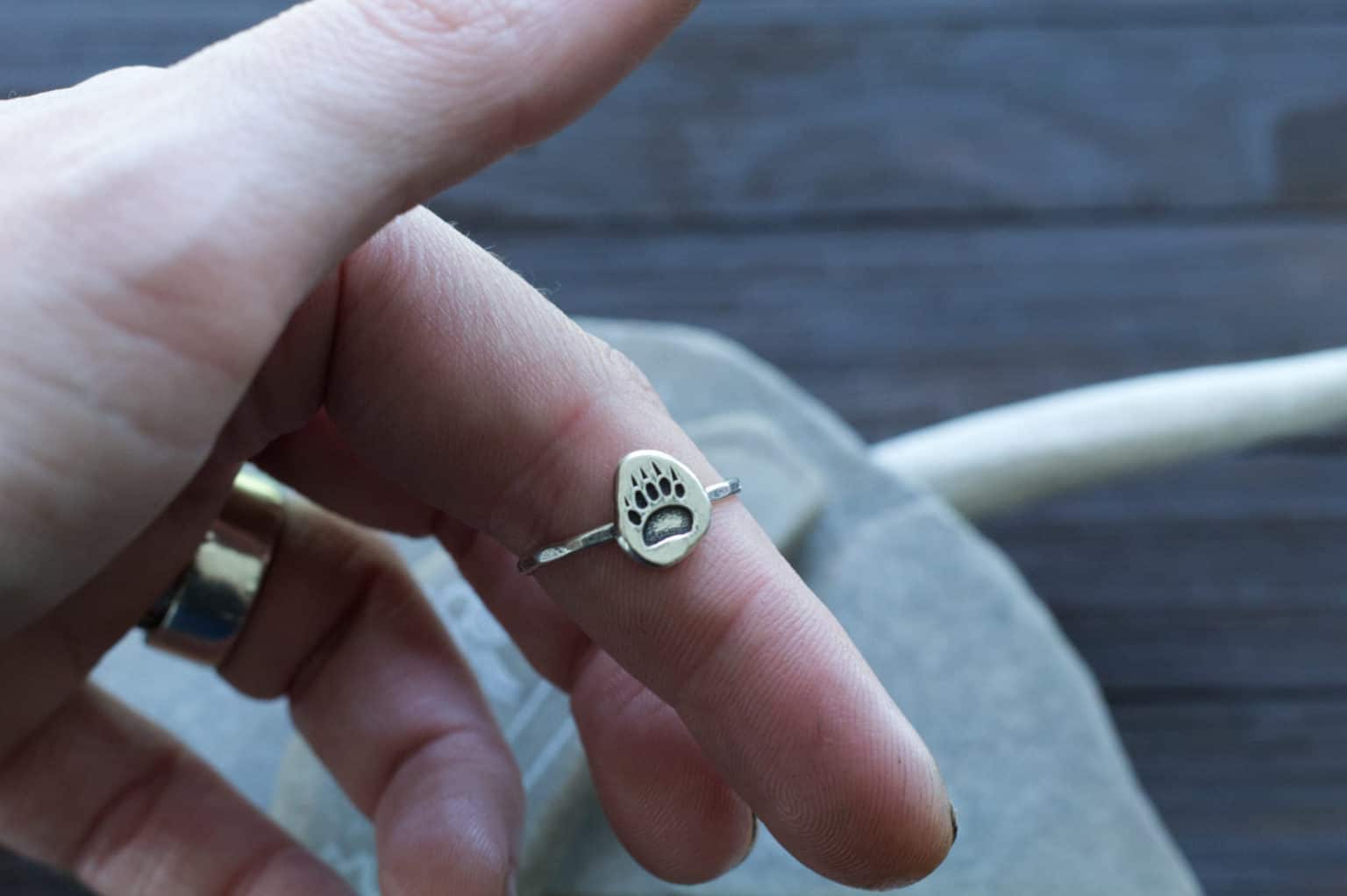
Beyond these symbols, the bear’s presence was felt in daily life, from tales told around the fire to rituals and ceremonies that celebrated the bear’s spirit. These symbols, deeply rooted in Norse spirituality, served as constant reminders of the community’s bond with the bear and its significance in their spiritual journey.
As we delve deeper into the world of Norse bear spirituality, it becomes evident that the bear’s influence went beyond tales of warriors and gods. It was a guiding force, a spiritual anchor, and a symbol of the deep-rooted connection between the Norse people, the natural world, and the vast cosmos beyond.
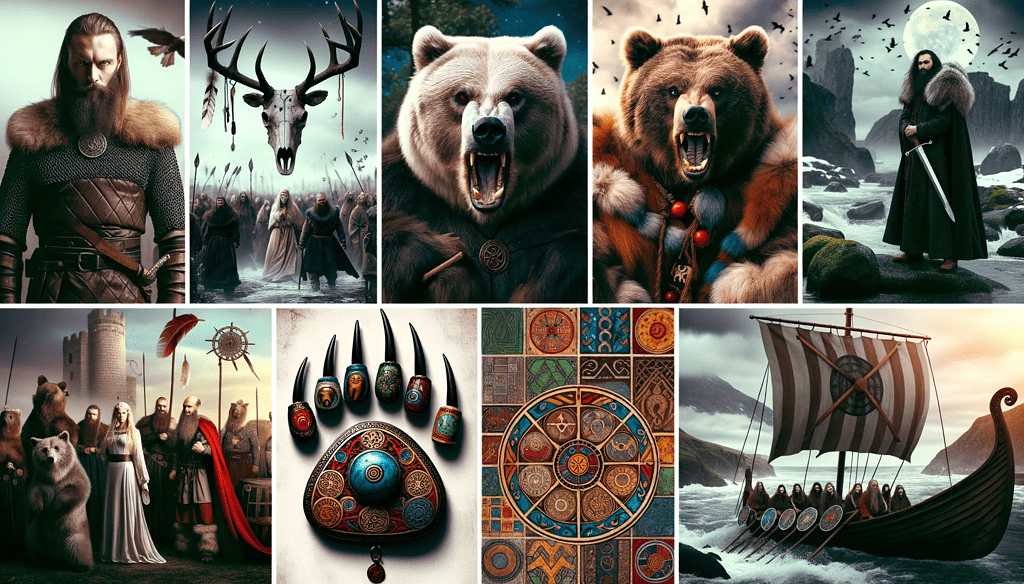
Modern Interpretations and Legacy
The Bear in Popular Culture
The tales of Norse bear warriors and berserkers, once confined to ancient sagas and oral traditions, have found new life in the modern era. Popular culture, with its vast reach and influence, has embraced these legends, weaving them into narratives that captivate audiences worldwide. Among the most notable portrayals is the acclaimed TV show “Vikings,” which delves into the lives, battles, and spiritual journeys of the Norse people.
In “Vikings” and other modern media, the Norse bear warriors and berserkers are often depicted as formidable foes, their strength and fury amplified by their deep connection to the bear spirit. These portrayals, while dramatized for entertainment, capture the essence of the berserker’s trance-like state in battle, channeling the raw power of the bear. The bear skins, once worn by these warriors to invoke the bear’s spirit, have become iconic symbols, representing a bridge between man, beast, and the gods.
Beyond TV shows, the legacy of Norse bear warriors has permeated literature, art, and even video games. Their tales, while rooted in ancient traditions, resonate with contemporary audiences, offering a glimpse into a world where man’s bond with nature and the spirit realm was unbreakable.
The Continued Influence of Bear Spirituality
While the tales of Norse bear warriors have found a place in popular culture, the spiritual significance of the bear remains a profound influence in modern pagan practices. Pagan cults and communities, in their quest for spiritual truths and connections, often turn to ancient wisdom and practices for guidance. The bear, with its deep-rooted connection to the natural world and the spirit realm, continues to be a revered figure in these circles.
Modern pagans, drawing inspiration from Norse beliefs, often incorporate bear rituals and symbols into their practices. The bear paw, once a symbol of strength and protection in Norse settlements, is now a common motif in pagan rituals, representing guidance, wisdom, and connection to the divine. Similarly, the bear’s hibernation patterns, symbolizing death and rebirth, resonate with modern pagan beliefs about the cyclical nature of life.
The continued reverence for the bear spirit is not just confined to rituals and symbols. Many pagans, in their spiritual journeys, seek to connect with the bear spirit, drawing upon its wisdom and strength to navigate the challenges of the modern world. This deep connection, spanning centuries, is a testament to the bear’s enduring legacy and its profound influence on spiritual seekers, both past and present.
Reflecting on the Legacy of Norse Bear Warriors and Berserkers
The tales of Norse Bear Warriors and Berserker mythology, deeply embedded in the rich tapestry of Norse culture, have left an indelible mark on both historical and modern contexts. These stories, once whispered around fires in Norse settlements, have transcended time, finding resonance with audiences across generations.
Historically, the bear was not just a creature of the wild for the Norse people. It was a spiritual guide, a symbol of strength, wisdom, and the delicate balance between the natural world and the spirit realm. The berserkers, channeling the raw power of the bear spirit, became legends in their own right, their tales of valor and fury echoing through the annals of Norse history. Their deep connection to the bear, symbolized by their iconic bear skins, was a testament to the profound bond between man, beast, and the divine.
In modern times, this legacy has been embraced and celebrated in various forms. Popular culture, with its vast reach, has brought the tales of Norse bear warriors and berserkers to global audiences, capturing their essence and spirit. TV shows like “Vikings” have painted vivid portraits of these warriors, their strengths, and their deep-rooted spiritual connections. Beyond entertainment, the bear’s spiritual significance continues to inspire modern pagan communities, offering guidance, wisdom, and a sense of connection in an ever-evolving world.
For pagans and spiritual seekers, the bear remains a beacon of hope, strength, and wisdom. Its tales, both ancient and contemporary, serve as reminders of the timeless bond between man and nature, the physical and the spiritual, the known and the unknown.
In essence, the Norse Bear Warriors and Berserker mythology stand as a testament to the enduring power of stories, their ability to bridge gaps between eras, cultures, and beliefs, and their profound impact on the human psyche. As we reflect on their legacy, it’s evident that these tales, rooted in ancient traditions, will continue to inspire, captivate, and guide generations to come.
Check out these other categories:
RECENT POSTS
